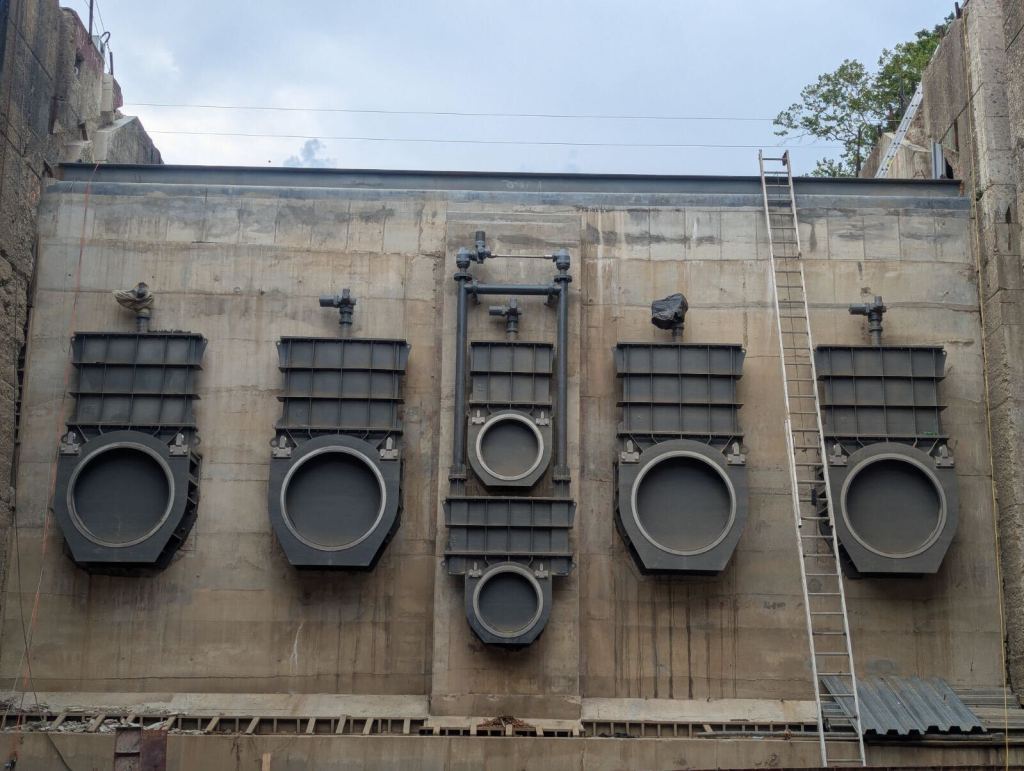Sun, water, federal dollars power new energy projects in Kentucky
Published 8:00 am Thursday, June 27, 2024

- Valves on a Kentucky River hydroelectric plant await the installation of turbines. (Photo courtesy of Jonathan Moore)
|
Getting your Trinity Audio player ready...
|
By Liam Niemeyer
Kentucky Lantern
Jonathan Moore sees potential for reliable, durable electric power in Kentucky’s hundreds of miles of waterways, more navigable water than many states can boast.
The Kentucky River is a prime example, says Moore, a partner in the company Appalachian Hydro Associates. Taking advantage of a system of locks and dams dating back to the 19th century, his company has partnered with Berea College in recent years to build two hydroelectric plants at locks on the Kentucky River. One plant has been online since 2021, and Moore said the second plant should be fully constructed by the end of the year.
These hydro plants produce only a small amount of electricity, a few megawatts at most, while other renewable energy sources such as utility-scale solar can generate hundreds of megawatts of power. But Moore said the small number “belies the fact that it’s going to generate that power all the time for 100 years or more — basically forever.”
“Appalachia in general has a good deal of potential,” Moore said. “It’s low-hanging fruit in the renewable energy spectrum for power that can be produced when the wind doesn’t blow in, the sun doesn’t shine.”
Federal funding, announced Wednesday, will help construct a third hydroelectric plant along the river, another partnership with Berea College.
U.S. Department of Agriculture officials announced more than $375 million in partially forgivable loans and grants across the country through two U.S. Department of Agriculture programs — the funding made possible through the Inflation Reduction Act — to help fund numerous energy projects, including installing rooftop solar panels on farms and heat pumps at small businesses.
Trending
In Kentucky, the USDA is providing about $16.6 million in partially forgivable loans for the latest hydropower plant. Moore said the federal support will help build the plant much more quickly. Power from the third plant, like the others, will be sold at a discount to the utility East Kentucky Power Cooperative to generate revenue for Berea College. Moore said a total of six plants are planned along the river, which he believes can add up to a significant amount of electricity.
“I’m glad that water’s going to turn a turbine and get some people power,” he said.
Another grant provided through the USDA is helping a Hancock County farmer try out solar power on his farm for the first time. Justin Obenchain, 37, grows about 20 acres of sweet corn and uses energy-intensive freezers year-round to keep the corn fresh for sale to local schools and elsewhere.
He learned about the grant program through a local agriculture extension agent and saw solar as a way to curb some of the cost of powering the freezers.
“I thought it would be something that would fit us pretty well,” Obenchain said. “An open mind to what’s coming is going to be very beneficial in the long run.”
He received a $40,000 grant through the USDA’s Rural Energy for America Program, or REAP, which covered about half the cost of the rooftop solar installations now located on his farm. He expects the about 90 solar panels to be turned on sometime in July, he said, potentially an opportunity to show his neighbors how solar power works for him.
“I think everything deserves a look. And some farms it may fit, some it may not,” Obenchain said. “But I think for ours, it’ll be a good fit.”





